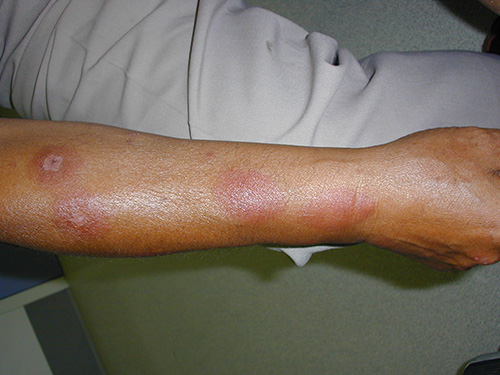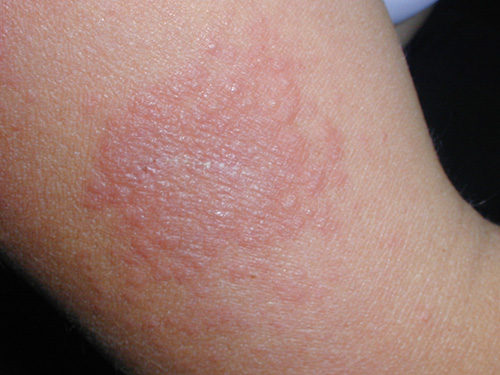Polymorphic light eruption
Polymorphic light eruption is an idiopathic photosensitivity disorder. Within hours of sun exposure, pruritic erythematous papules, plaques or vesicular lesions appear on exposed skin of the forearms and upper chest. The condition usually occurs in spring rather than in winter, when background sun exposure is higher and fewer body areas are covered with clothing. The lesions fade over several days without scarring. See here for photos of polymorphic light eruption.
Advise patients to use broad-spectrum sun protection. Ultraviolet A (UVA) is the most common precipitating wavelength.
For symptomatic relief of the rash (particularly if it is vesicular) use:
1betamethasone dipropionate 0.05% ointment topically, twice daily betamethasone dipropionate betamethasone dipropionate betamethasone dipropionate
OR
1mometasone furoate 0.1% ointment topically, twice daily. mometasone furoate mometasone furoate mometasone furoate
For severe episodes of polymorphic light eruption, a short course of oral corticosteroids can be used. Use:
prednisolone (or prednisone) 25 mg orally, once daily for 3 to 5 days. prednisolone prednisolone prednisolone
If these measures are ineffective, refer to a dermatologist. Phototherapy may be used to improve the skin’s tolerance of UV light. Alternative therapies include hydroxychloroquine and ciclosporin.

Photo sourced with permission from Dr Jonathan Chan.

Photo sourced with permission from Dr Jonathan Chan.

Photo sourced with permission from Dr Jonathan Chan.
